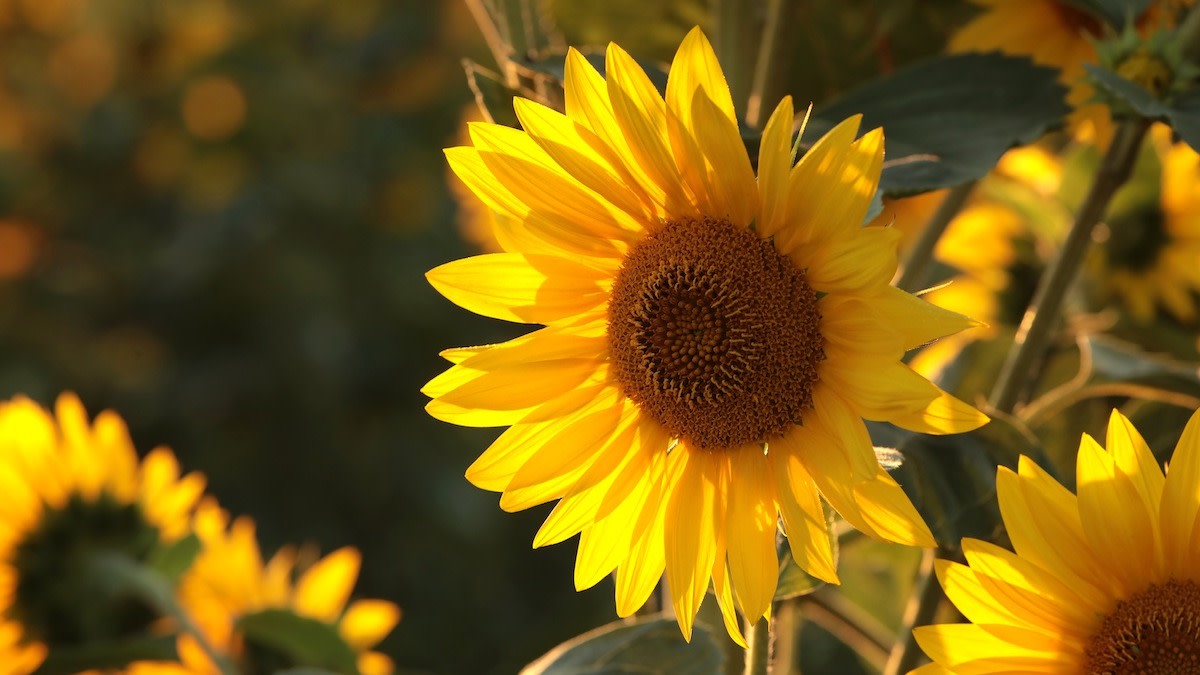How to Plant Sunflowers in Your Garden
Written by MasterClass
Last updated: Jun 7, 2021 • 3 min read
Sunflower plants (Helianthus annuus) are more than just large, beautiful flowers in the garden. Gardeners plant sunflowers to feed pollinators like honeybees, and attract birds to ward off garden pests. Whether you are looking for a beautiful flower for your yard or are looking for a great companion plant, sunflowers play an important role in keeping your garden healthy and thriving.
Learn From the Best
5 Sunflower Varieties
Planting sunflowers can benefit your garden in a number of ways. There are many different types of sunflowers you can grow. Here are some common sunflower varieties:
- 1. Mammoth: The Mammoth sunflower is a towering variety that can sometimes grow to over 12 feet tall. The sunflower seeds from this giant sunflower are often used for snacking or bird feeders.
- 2. Teddy Bear: These small sunflowers can grow up to three feet tall, and make a great addition to smaller gardens. When Teddy Bear sunflowers blossom, they produce a fluffy golden flower head.
- 3. Autumn Beauty: Growing up to seven feet tall, Autumn Beauty sunflowers have bi-colored blossoms that take on yellow, bronze, and mahogany colors.
- 4. Sunrich Gold: Growing around five feet tall, Sunrich Gold sunflowers are pollen-free and make great cut flowers for bouquets.
- 5. Moulin Rouge: Moulin Rouge sunflowers have dark red petals and a thin ring of yellow surrounding its dark base. This pollen-free, branching variety grows around four feet tall, with flower blossoms that grow around four inches wide.
When Should You Plant Sunflowers?
Sunflowers take anywhere from 70 to 120 days to reach maturity. You can plant sunflowers after the danger of frost has passed—anywhere from early spring to late spring, depending on your hardiness zone. If you live in a climate with a short growing season, sow seeds in the soil up to two weeks before the last spring frost.
Where Should You Plant Sunflowers?
Plant sunflower seeds in loose, well-draining alkaline soil that receives full, direct sunlight (soil temperature should be at least 50 degrees Fahrenheit). The sunflower plants should have enough room for their taproots to extend, at least two feet deep and three feet wide.
Keep sunflower plants away from areas exposed to high winds, as sunflower stalks can be susceptible to damage early on in their growth.
How to Plant Sunflowers
Sunflowers, especially large varieties, need plenty of room to grow and blossom.
- 1. Prepare the soil. Sunflowers are heavy feeders so add organic matter or aged manure to your soil to keep it nutrient-rich. You can also use a slow-release granular fertilizer around eight inches deep to help continually treat your soil.
- 2. Plant seeds. Sunflowers have long taproots that need plenty of room to grow. Plant sunflower seeds one to one and a half inches deep, and at least six inches apart in warm soil. Keep sunflower rows about 30 inches apart (though smaller varieties of sunflowers can be planted closer together) so the plant has room to grow.
- 3. Lightly fertilize. A light application of fertilizer will encourage sturdy stem growth, protecting them from strong winds and breakage. Sunflowers are sensitive to fertilization so be careful not to overfertilize.
- 4. Stagger plantings. Sow seeds every five to six weeks to encourage continuous blooms in your garden.
- 5. Water properly. Water thoroughly after planting your sunflower seeds. Once your sunflowers grow into small plants, they should receive several gallons of water per week, but only infrequently to encourage deep root growth.
- 6. Allow direct sunlight. Sunflowers need at least five hours of direct sunlight and long, hot summers to healthily blossom.
4 Sunflower Companion Plants
Companion planting is a useful technique for maximizing the growth potential of the crops in your garden. Certain plants do better when grouped together, so try companion planting the following crops with sunflowers to yield the best results:
- 1. Corn: Sunflowers and corn require similar soil conditions to grow. Sunflowers help deter armyworms, which can destroy corn crops and lessen their yields.
- 2. Cucumber: Cucumbers (as well as squash and melons) are heat-sensitive crops that benefit from a sunflower’s shade. These climbing crops also like to use the tall sunflower stalks as a trellis. Learn how to grow and harvest cucumbers in your garden in our guide here.
- 3. Bush beans: Bush beans do well in partial shade and can benefit from pollinators (like bees) that sunflowers attract. However, keep sunflowers away from pole beans, as they can stunt each other’s growth.
- 4. Artichokes: Sunflowers keep artichokes protected from the full sun, while also leaving enough room for the artichoke’s growing space, making them excellent companions.
Learn More
Grow your own food with Ron Finley, the self-described "Gangster Gardener." Get the MasterClass Annual Membership and learn how to cultivate fresh herbs and vegetables, keep your house plants alive, and use compost to make your community - and the world - a better place.
